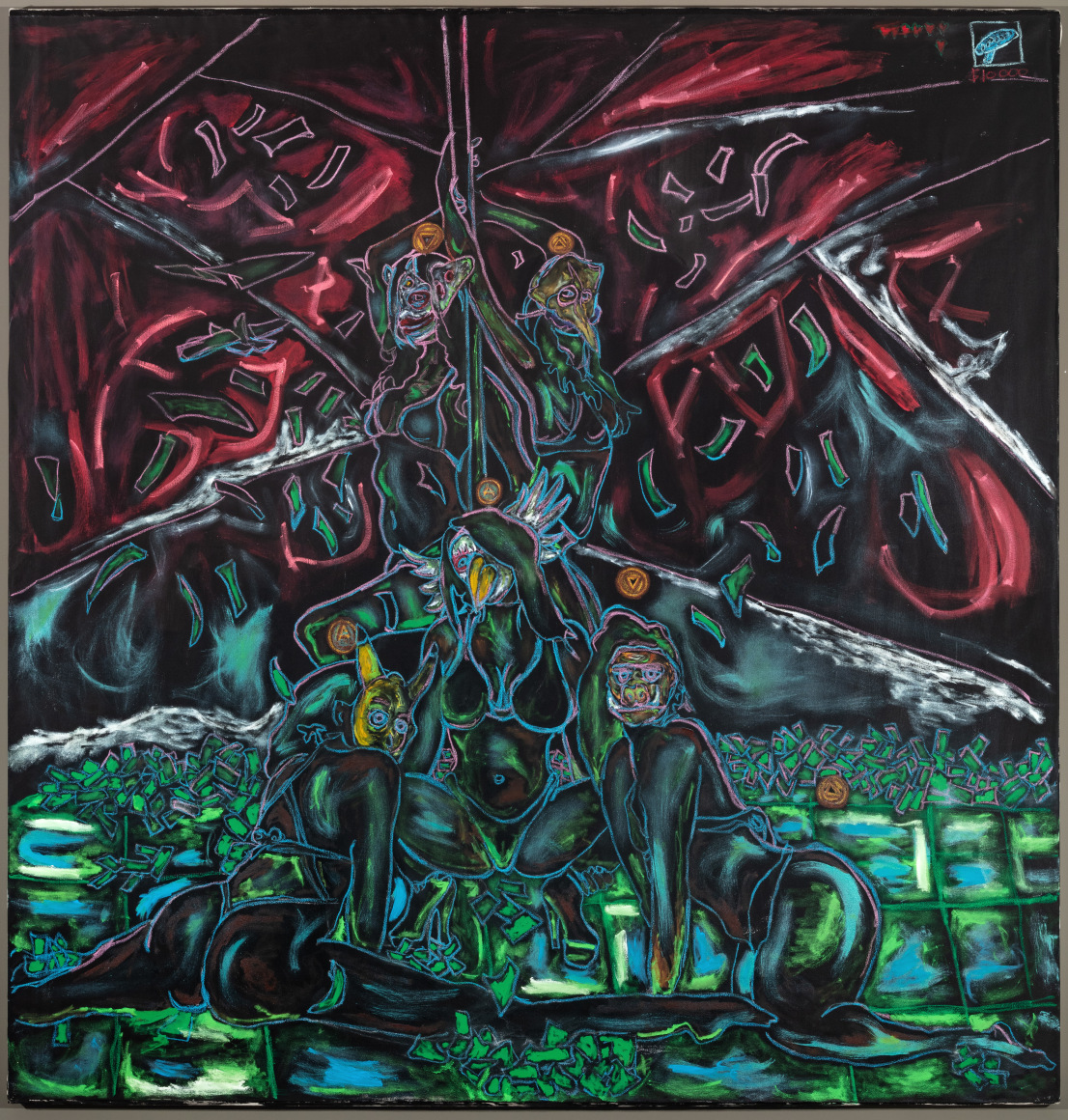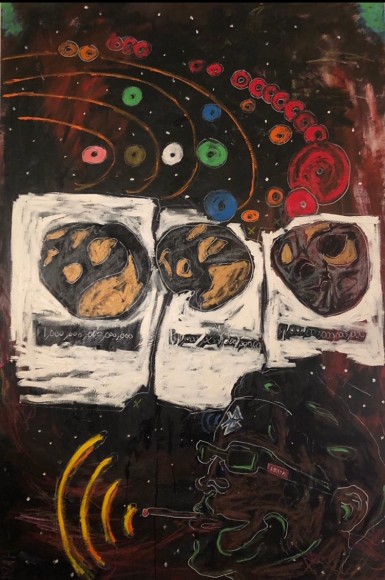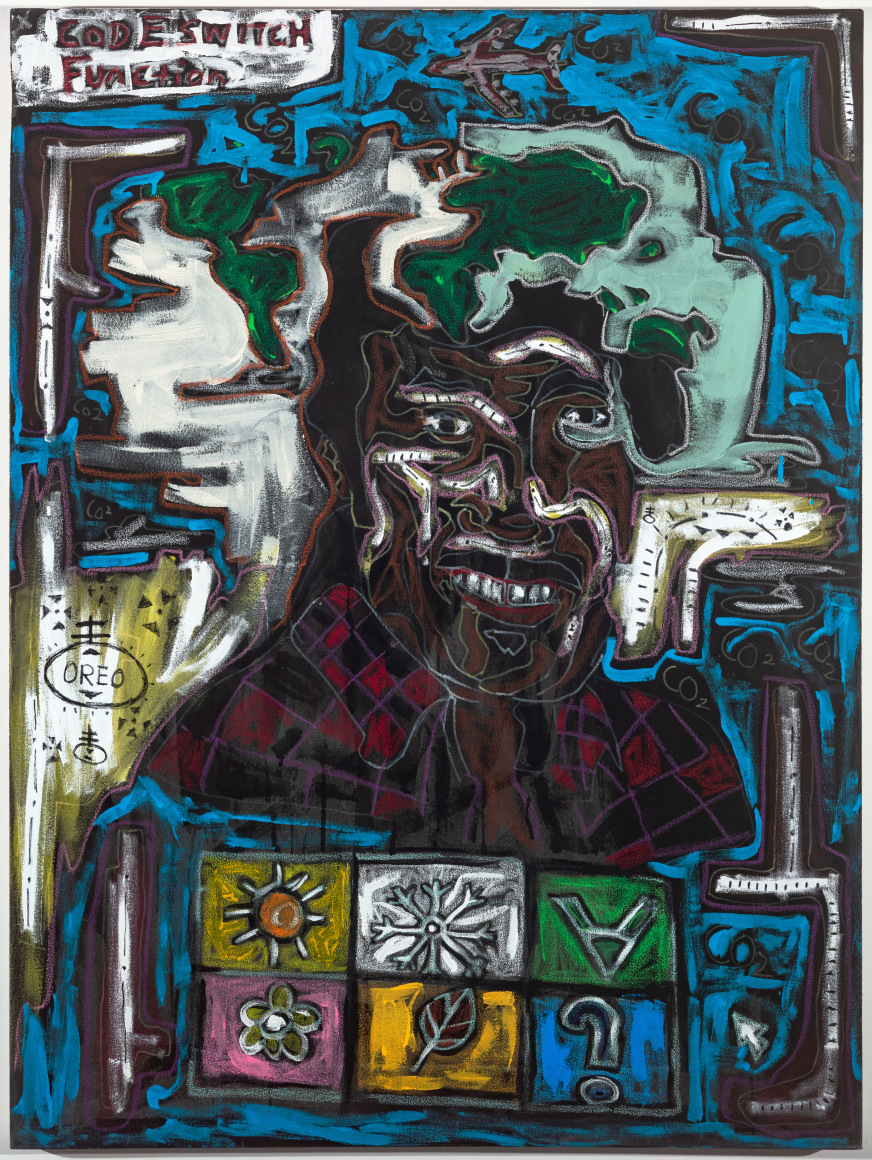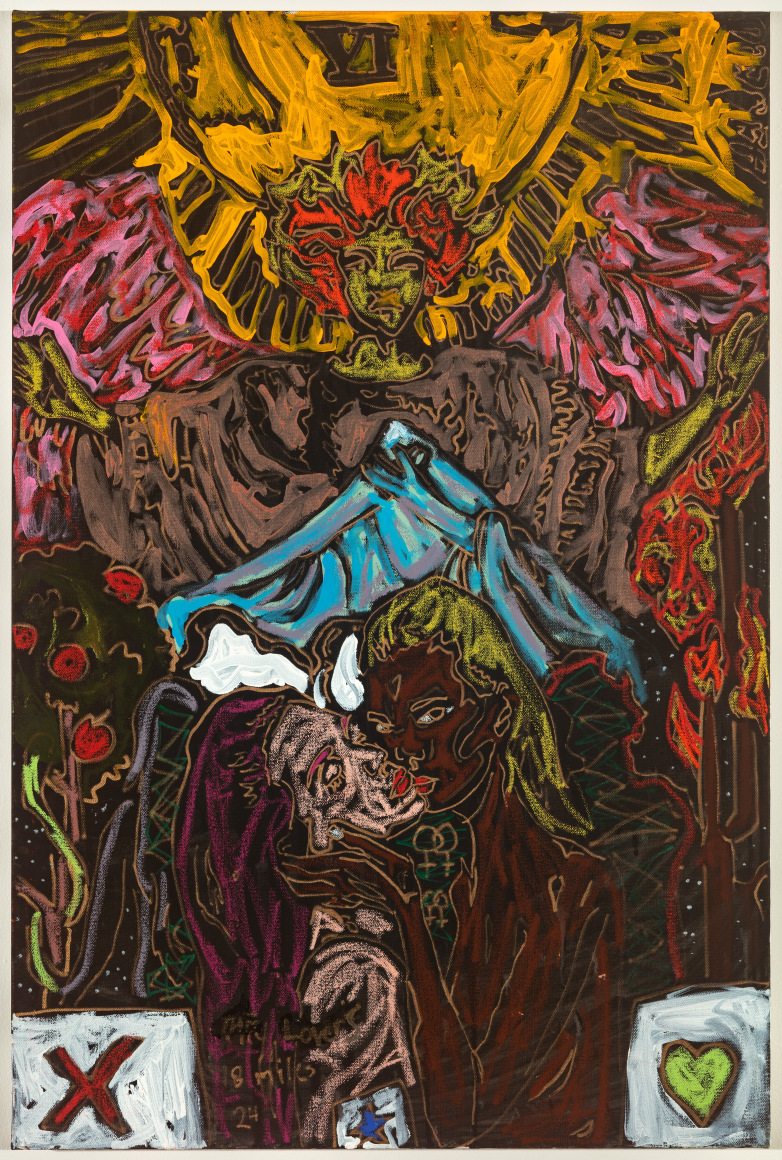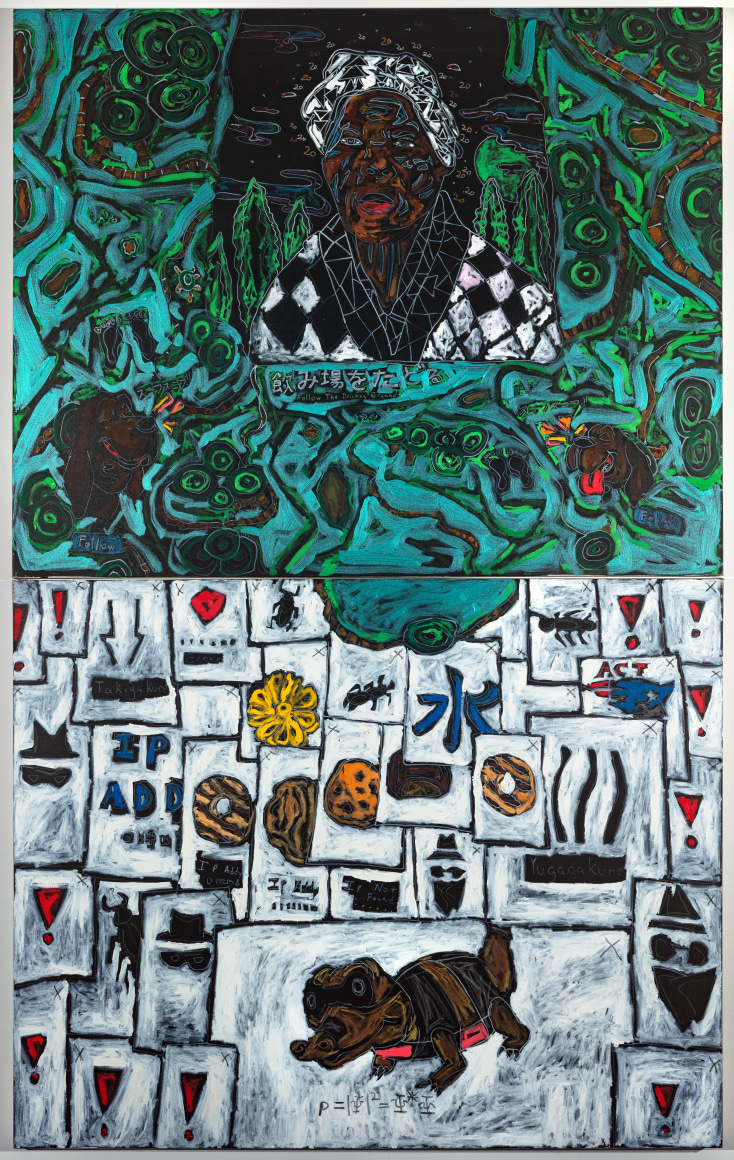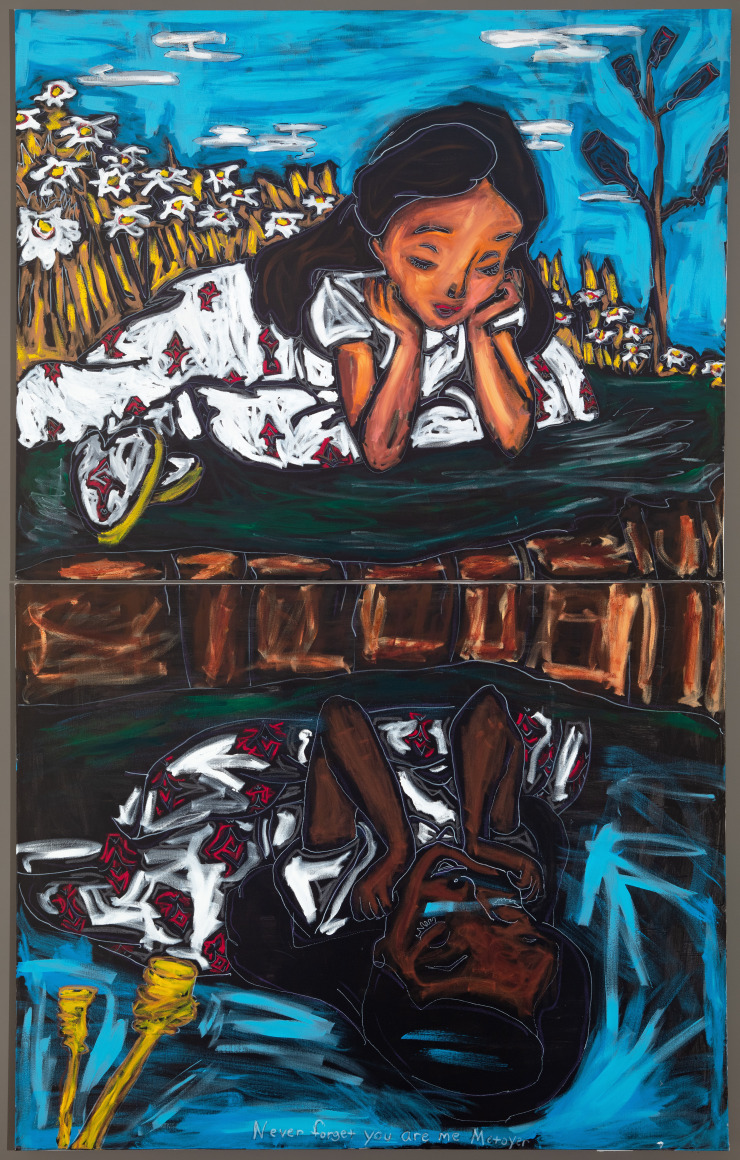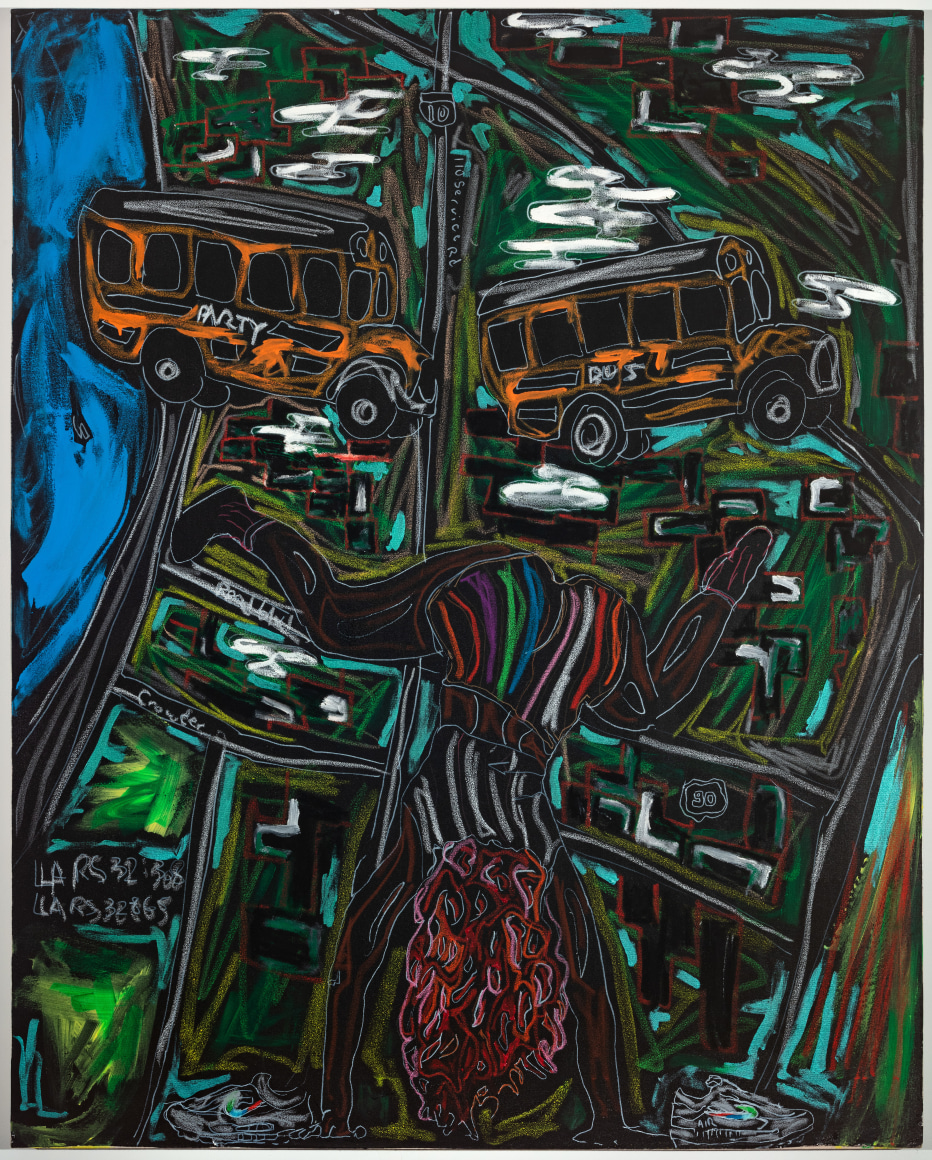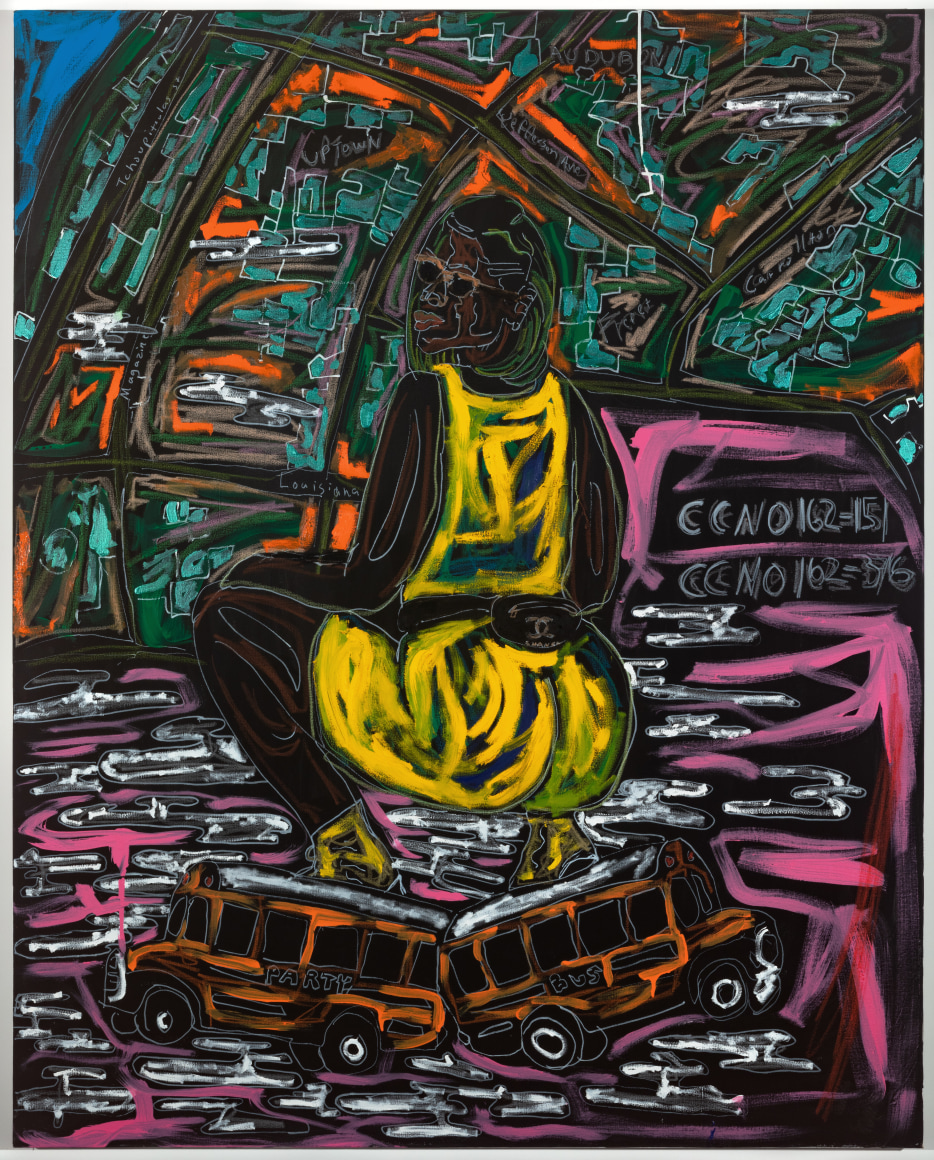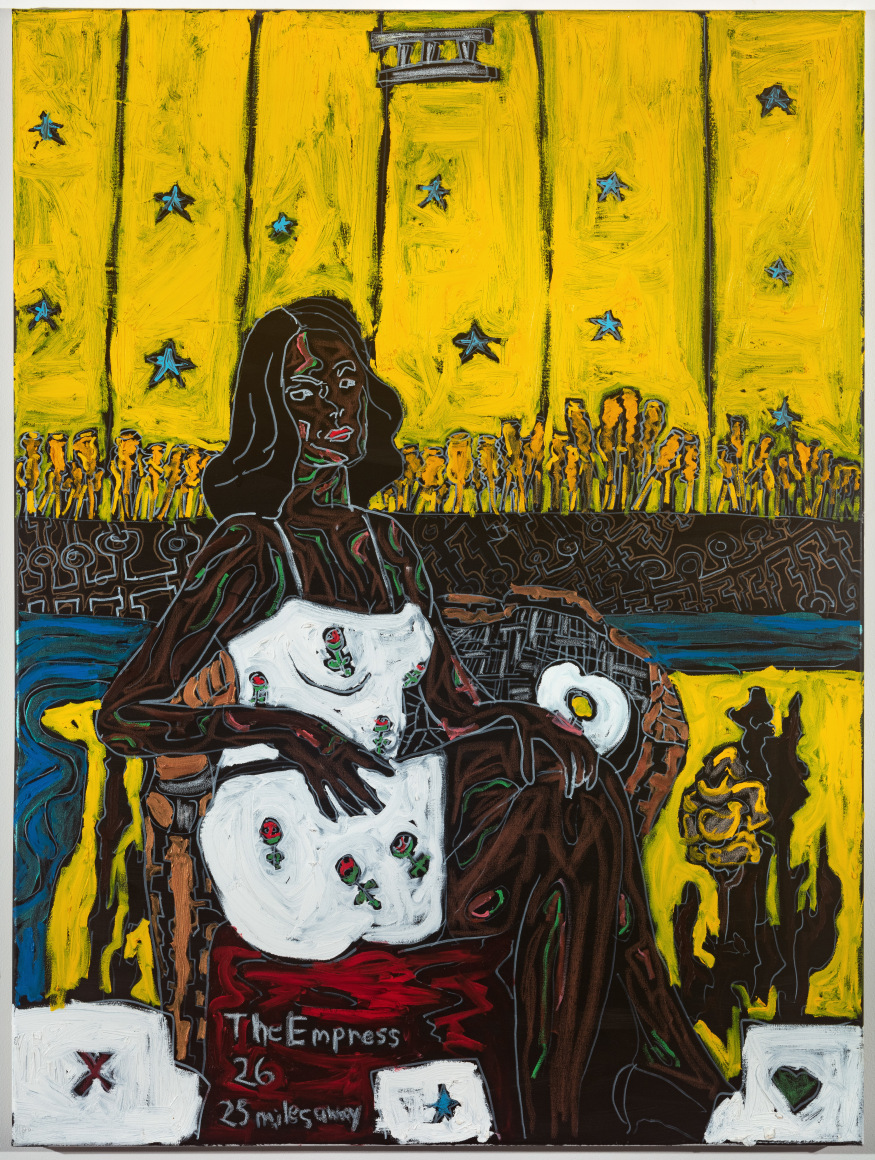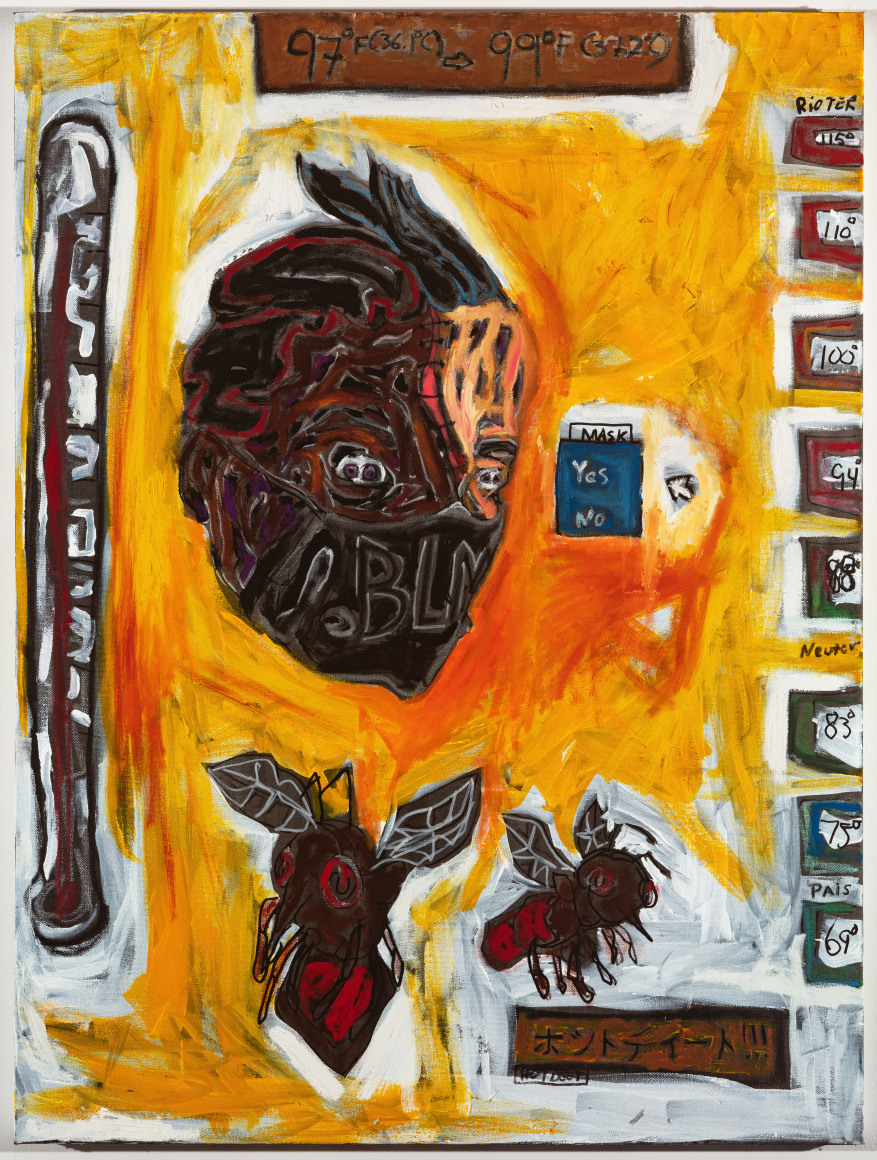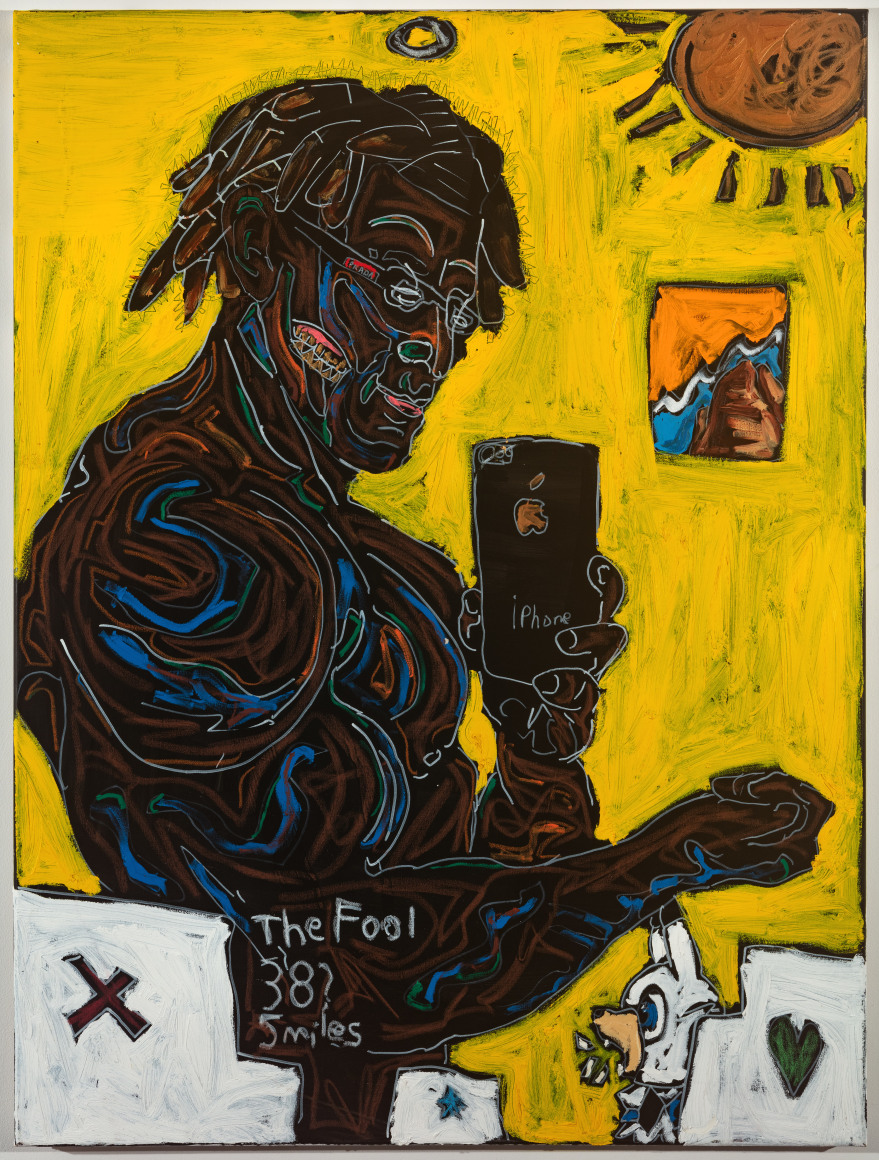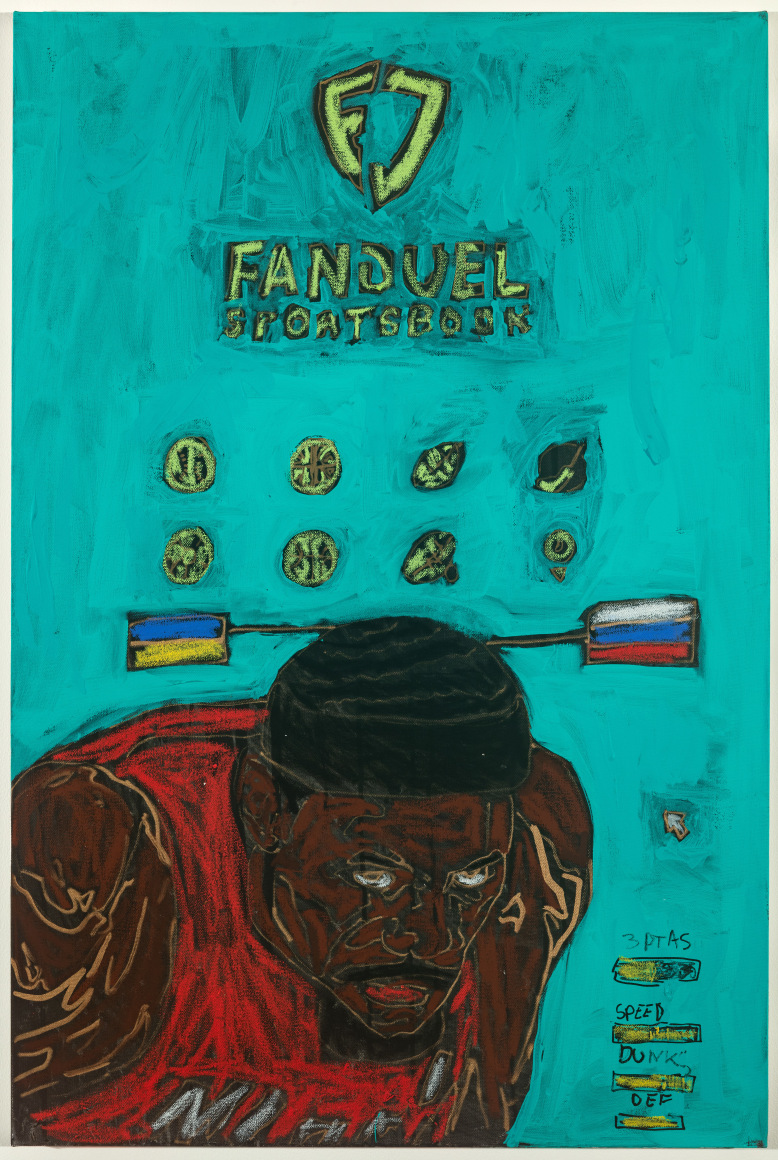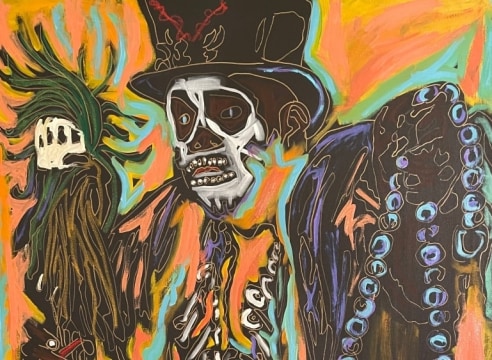
1 June 2022 (New Orleans, LA) JONATHAN FERRARA GALLERY is proud to present the first solo exhibition of New Orleans-based artist John Isiah Walton entitled Code Black. In this collection of fifteen new and recent works, Walton explores themes of race, identity, and contemporary culture. The “Black Paintings,” a series Walton began in 2017, address issues of identity including visibility and invisibility, presence and absence, figure, and void. On canvases painted black, layers of neon-hued acrylic and oil stick depict scenes ranging from the mundane to the controversial.
His neo-expressionist works are internationally recognized for their commentary on race, class, identity, and current events through his irreverent, frenetic, and sometimes absurdist style. Influenced by internet aesthetics, Black identity, pop culture, and Louisiana history, Walton’s subjects are often unconventional and sometimes shocking. In the tradition of Basquiat, his work frequently has hidden meanings and symbols, and his choppy brushwork endows the work with the energy and intensity that the artist is known for. Rooted in concern about the social, economic, political, and cultural structures at play in contemporary life, Walton’s best-known series encourages discomfort as a vehicle for discussion.
Walton was born in 1985 in New Orleans where he currently lives and work. He attended St. Augustine H.S. (1999-2002) and graduated from Sarah T. Reed H.S. (2003). Walton received an AA degree in 2012 from Delgado College, New Orleans and has been a member of Second Story Gallery (2012-13), The Front, New Orleans (2014-2017), and Level Artist Collective (2015-Present). His work has been exhibited show at the Art Lab Akiba (Tokyo, Japan); the Atlanta Contemporary Biennial (Atlanta, Georgia); the Ogden Museum of Southern Art (New Orleans, Louisiana); and appears in numerous museum collections including: the New Orleans Museum of Art; the Ohr-O'Keefe Museum of Art (Biloxi, Mississippi); P339 (Brooklyn, New York). His residencies include the Macedonia Institute (Chatham, New York) and the Joan Mitchell Center (New Orleans). In 2022, he will showcase work in Tel Aviv, Israel.
The exhibition will be on view from 1 June to 16 July 2022, with an opening reception coinciding with the Arts District of New Orleans’ (ADNO) First Saturday Gallery Openings from 5-8 PM on 4 June 2022.
For more information, press or sales inquiries please contact Gallery Director Matthew Weldon Showman at 504.343.6827 or matthew@jonathanferraragallery.com. Please join the conversation with JFG on Facebook (@JonathanFerraraGallery), Twitter (@JFerraraGallery), and Instagram (@JonathanFerraraGallery) via the hashtags: #JohnIsiahWalton, #CodeBlack, #JonathanFerraraGallery, and #ArtsDistrictNewOrleans.

